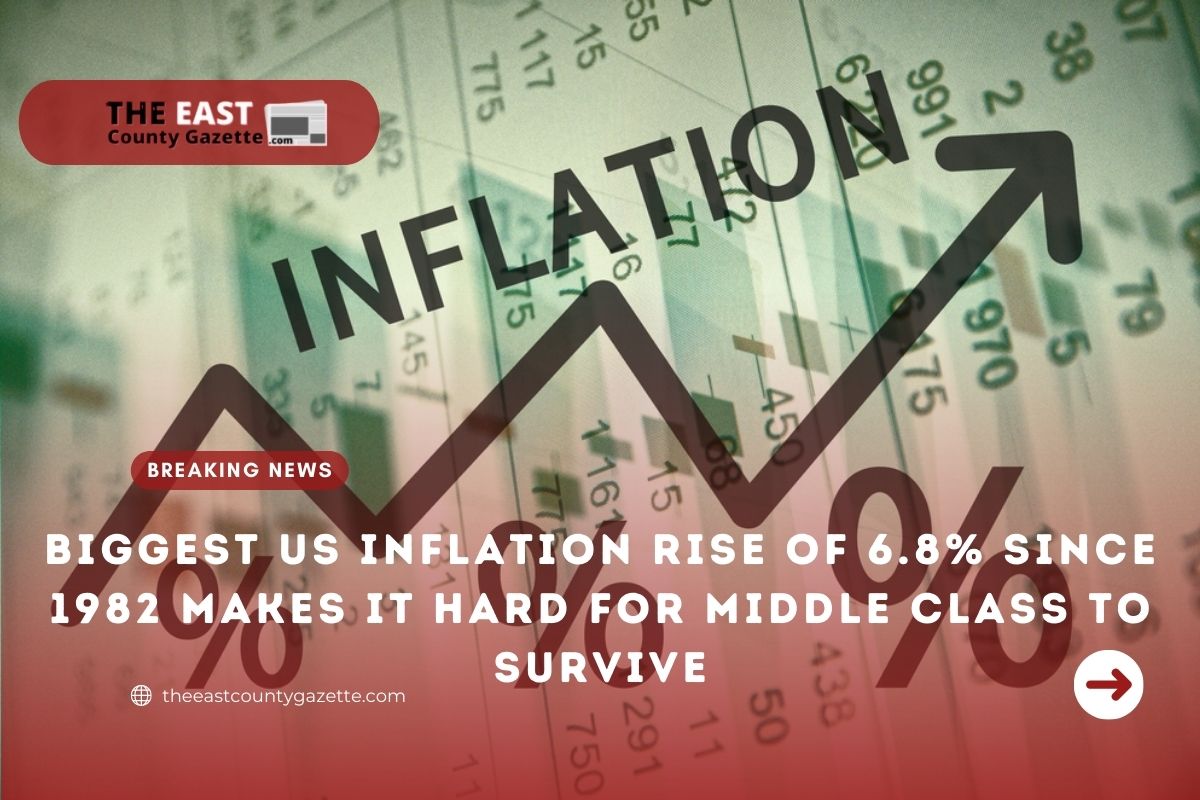Biggest US Inflation Rise of 6.8% Since 1982 Makes It Hard For Middle Class to Survive
Americans experienced their highest annual inflation rate since 1982 November as food, energy, housing, and other items soared at a record pace, causing prices to rise 6.8% compared with a year earlier.
Labor Department data showed Friday that prices increased 0.8% between October and November.
Consumers, particularly those in lower-income households and those who need everyday necessities, have been put under significant pressure due to rising inflation.
As a result of inflation, many workers have received lower wages, Federal Reserve plans to reduce economic assistance have complicated, and President Joe Biden’s popularity is at an all-time low.
The fast recovery from the pandemic recession has only resulted in the rapid acceleration of inflation.
The factors contributing to inflation include the flood of government stimuli, ultra-low interest rates engineered by the Fed, and supply shortages at factories in the United States and abroad.
Due to higher-than-anticipated customer demand, companies have shutdowns in relation to COVID.
Most notably, manufacturers have been slowed by overcrowded ports and freight yards.
Because of a worker shortage, employers have been raising wages as well, and some have raised prices as well, thereby driving up inflation more.
In turn, prices for foods and used vehicles have gone up as well as electronics, household furnishings, and rental cars.
In addition to apartment and restaurant meals, medical services and entertainment are among the services that have been affected by the increase in prices, which began when Americans were stuck at home and flooded factories with orders for goods after the pandemic hit.
A persistent high rate of inflation has shocked the Federal Reserve, whose chair, Jerome Powell, has long characterized inflation as a temporary phenomenon caused by a bottleneck in supply chains.
Though Powell implicitly acknowledged that high inflation has lasted longer than he anticipated two weeks ago, recently, he signaled a shift on the issue.
Based on his statement, it is more likely the Fed will act more swiftly than previously planned to end its ultra-low-rate policies.
Consumers may be able to find some relief if inflation peaks in the coming months and then slowly ease, some economics revealed.
Read More: You Can Reduce Your Household Electricity And Gas Bills – Here’s How
They further stated that some industries have seen their supply shortages ease over the past year.
While American consumers will continue to face higher energy costs in the months to come, they will most likely avoid the record-setting high energy prices for the winter predicted by earlier forecasts.
Consequently, gasoline prices have fallen slightly as oil prices declined modestly. The average cost of gas has declined from $3.42 a month ago to $3.38, according to AAA.
More dramatically, natural gas prices have fallen nearly 40% since October, when they reached a seven-year record high.
Accordingly, even though home heating costs are expected to be higher than last year, they will not rise as much as originally anticipated.
As corn and wheat prices have declined sharply from their highs earlier this year, food prices, too, could possibly ease.

